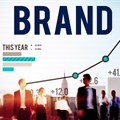The number of agency partners clients currently working in South Africa has increased yet again.

Source: © 123rf
123rf Social Media continues to claim a large share of digital spend in SA according to Scopen's Agency Scope SA
“In 2021, the number averaged 12.7 agencies working to carry out marketing, communication and advertising projects,” says César Vacchiano, president and CEO at Scopen.
“In 2023, the figure reached 15.2, with the three agents that collaborate most with advertisers being digital platforms at 5.3, BTL agencies at 3.0 and advertising agencies at 1.9.”
Digital paid media arena grows
As anticipated, Vacchiano highlights digital further growth in the digital paid media arena, from 33.1% to 37.4%.
CEO of the Independent Agency Search & Selection Company (IAS) and Scopen partner, Johanna McDowell says what is important to note is that while investment in digital paid media has increased, it’s done so at a far slower rate than in previous years.
“Total digital spend has decreased,” she says, noting the drop from 37.3% in 2021 to 34.9% in 2023.
“While the difference isn’t vast, it is important to note where the most budget is being spent and digital paid media is the front runner.”
How South Africa is stacking up
In reviewing Agency Scope’s findings on markets with the highest digital budgets in 2023, China and Brazil head the pack with 50.1% and 49.9% respectively, while South Africa’s spend of 34.9% falls below the lower-order countries, Colombia (37.5%) and Portugal (35.7%).
“Globally, digital spend has decreased by around 2%, but trends show these figures are more than likely to increase again,” Vacchiano asserts.
McDowell suggests the trend to watch is how digital budgets are being spent.
“Social Media continues to claim a large share of digital spend. Where South Africa lags in spend is mainly in the e-commerce sector, where growth has been lower than in other countries. I don’t think it’s a concern, it’s just the state of play right now. Expect to see growth in e-commerce in the future.”
Overall, McDowell notes, digital paid media coffers are showing improvement and this will likely continue, but at a slower rate than in previous years.
“What’s interesting from our stats is how fragmented everything is becoming,” she says.
“The challenge facing marketers is knowing where to spend their money and how best to deploy declining budgets.
“We noted recently the decline in marketing budgets about turnover.
Word from the marketers themselves is that they are putting more money into digital as they believe it’s the cheaper route to go.
“We’re not convinced this is the best thing to be doing. While digi-spend may bring some great analytics, is it working for brand-building?”
Snake oil: Analytics instead of research
What the IAS is suggesting to clients is to rely more heavily on their media agencies, which can aggregate all the data look at the stats, and relate what consumer data shows the best path for the brand to be taking, whether it be traditional or digital.
“Marketers must guard against ‘snake oil salesmen’ who offer the newest gadget or software that promises to be the Next Big Thing in analytics. Thinking more data – or a different way of delivering it – will be what solves their issues may prove very costly.”
Vacchiano and McDowell agree that knowing exactly how effective these spends are and how this budget is being spent is extremely difficult.
“Some new digital audits may be a better way to spend budget right now,” says Vacchiano, “to ensure your money is going to the right places and that the correct measurement tools are being used to optimise your spend.”





















































